50g
Showing 101–150 of 320 results
-
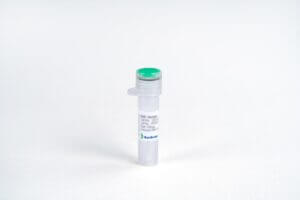
G-CSF, Mouse
$271.69 Add to cart View Product DetailsGranulocyte Colony-Stimulating Factor (G-CSF), also known as CSF-3 and MGI-1G, is a cytokine and hormone belonging to the IL-6 superfamily. It is expressed by monocytes, macrophages, endothelial cells, fibroblasts and bone marrow stroma. G-CSF stimulates the bone marrow to produce granulocytes and stem cells, and specifically stimulates the proliferation and differentiation of the neutrophilic granulocyte lineage. G-CSF has been used to stimulate white blood cell production after chemotherapy. It has also been used to boost the number of hematopoietic stem cells after bone marrow transplantation.
-

gAcrp30/Adipolean, Mouse
$155.25 Add to cart View Product DetailsgAcrp30 is the globular head domain of Adipocyte complement-related protein of 30 kDa (Acrp30), a cytokine expressed in adipocytes. The name of Acrp30 is bases on its closest homolog, complement factor c1q, and the globular domain of Acrp30 has an unexpected homology with the Tumor Necrosis Factor (TNF) family of cytokines. Acrp30 is recognized by two receptors: adipoR1 expressed in skeletal muscle, and adipoR2 expressed in liver. The expression level of Acrp30 in adipocytes is negatively correlated with body weight and is lower in obese mouse than normal mouse. The globular domain of Acrp30 induces free fatty acid oxidation in muscle and weight reduction in mouse, suggesting its potential use as a pharmacological agent in obesity.
-
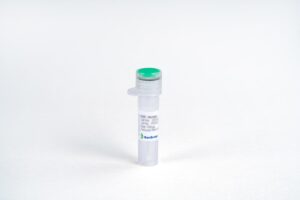
GDNF, Human
$271.69 Add to cart View Product DetailsGlial cell line-derived neurotrophic factor (GDNF) is a neurotrophic factor belonging to the TGF-beta super family and is necessary for neuron survival and phenotypic maintenance in the central and peripheral nervous systems. G-DNF has the potential to support the differentiation and survival of many neuron subpopulations, especially dopaminergic neurons and motor neurons, as well as Purkinje cells and sympathetic neurons. Sertoli cells, type 1 astrocytes, Schwann cells, neurons, pinealocytes and skeletal muscle cells are known to express GDNF in human. GDNF has been shown to interact with GFRA2 and GDNF family receptor alpha 1. Mutations in this gene may be associated with Hirschsprung’s disease, Parkinson’s disease and amyotrophic lateral sclerosis (ALS).The recombinant human G-DNF expressed in E.coli is a disulfide-linked homo-dimer, with an apparent molecular weight of 17 kDa.
-
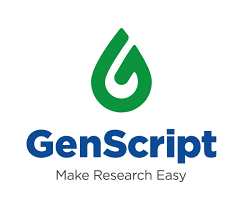
GenCRISPR™ Cas12a (Cpf1) Nuclease
$97.46 Add to cart View Product DetailsThe
clustered regularly interspaced short palindromic repeats, known as CRISPR systems are adaptive immune mechanisms commonly
present in archaea and bacteria. The CRISPR systems enable the host to specifically
target and cleave foreign nucleic acids thus targeting infectiousviruses and
plasmids. Recently, a type V CRISPR system has been identified in several
bacteria, the Cpf1 CRISPR from Prevotella and Francisella 1. In contrast to
Cas9 systems, CRISPR/Cpf1 systems are smaller in size, do not require an
additional trans-activating crRNA (tracrRNA), and allow for targeting of
additional genomic regions by cleaveing the target DNA proceeded by a short
T-rich protospacer-adjacent motif (PAM). On the other hand, the Cas9 system requires
a G-rich PAM following the target DNA. Furthermore, Cas12a/Cpf1 introduces a
staggered DNA double stranded break with a 4 or 5-nt 5’ overhang. Recombinant
Acidaminococcus sp. BV3L6 Cas12a (cpf1) nuclease is expressed in E. coli and
purified. The nuclease contains nuclear localization sequence (NLS) at the
C-terminus and 6× His-tag at the C-terminus. -
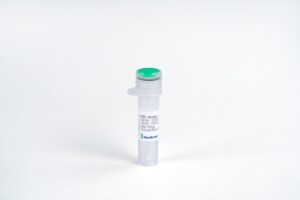
GH, Human
$76.76 Add to cart View Product DetailsGrowth Hormone (GH) is a member of the somatotropin/prolactin family which play an important role in growth control. The human GH cDNA encodes a 217 amino acid (aa), and the first 26 aa is a signal peptide. By alternative splicing, at least four isoforms of GH have been identified. The major role of GH in stimulating body growth is to stimulate the liver and other tissues to secrete IGF-1. GH stimulates both the differentiation and proliferation of myoblasts, and also stimulates amino acid uptake and protein synthesis in muscle and other tissues.
-

GH, Human(CHO-expressed)
$314.81 Add to cart View Product DetailsGrowth Hormone (GH) is a member of the somatotropin/prolactin family which play an important role in growth control. The human GH cDNA encodes a 217 amino acid (aa), and the first 26 aa is a signal peptide. By alternative splicing, at least four isoforms of GH have been identified. The major role of GH in stimulating body growth is to stimulate the liver and other tissues to secrete IGF-1. GH stimulates both the differentiation and proliferation of myoblasts, and also stimulates amino acid uptake and protein synthesis in muscle and other tissues.
-

GH, Mouse
$194.06 Add to cart View Product DetailsGrowth Hormone (GH), is a member of the somatotropin / prolactin family of hormones which play an important role in growth control. The gene, along with four other related genes, is located at the growth hormone locus on chromosome 17 where they are interspersed in the same transcriptional orientation; an arrangement which is thought to have evolved by a series of gene duplications. The five genes share a remarkably high degree of sequence identity. Alternative splicing generates additional isoforms of each of the five growth hormones, leading to further diversity and potential for specialization. This particular family member is expressed in the pituitary but not in placental tissue as is the case for the other four genes in the growth hormone locus. Mutations in or deletions of the gene lead to growth hormone deficiency and short stature.
-

Glycochenodeoxycholic Acid Sodium Salt
$5,275.96 Add to cart View Product DetailsGlycochenodeoxycholic Acid Sodium Salt
-

GM-CSF, Human
$271.69 Add to cart View Product DetailsGranulocyte Macrophage-Colony Stimulating Factor (GM-CSF) was initially characterized as a growth factor that can support the in vitro colony formation of granulocyte-macrophage progenitors. Granulocyte Macrophage-Colony Stimulating Factor (GM-CSF) is produced by a number of different cell types, including activated T cells, B cells, macrophages, mast cells, endothelial cells, and fibroblasts, in response to cytokine of immune and inflammatory stimuli. Besides granulocyte-macrophage progenitors, Granulocyte Macrophage-Colony Stimulating Factor (GM-CSF) is a growth factor for erythroid, megakaryocyte, and eosinophil progenitors. On mature hematopoietic, monocytes/macrophages and eosinophils. Human Granulocyte Macrophage-Colony Stimulating Factor (GM-CSF) can induce human endothelial cells to migrate and proliferate. Additionally, Granulocyte Macrophage-Colony Stimulating Factor (GM-CSF) can stimulate the proliferation of a number of tumor cell lines, including osteogenic sarcoma, carcinoma, and adenocarcinoma cell lines.
-
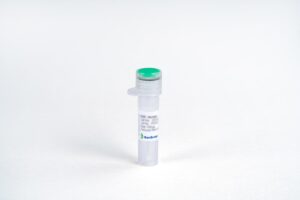
GM-CSF, Human(CHO-expressed)
$271.69 Add to cart View Product DetailsGranulocyte Macrophage-Colony Stimulating Factor (GM-CSF) was initially characterized as a growth factor that can support the in vitro colony formation of granulocyte-macrophage progenitors. Granulocyte Macrophage-Colony Stimulating Factor (GM-CSF) is produced by a number of different cell types, including activated T cells, B cells, macrophages, mast cells, endothelial cells, and fibroblasts, in response to cytokine of immune and inflammatory stimuli. Besides granulocyte-macrophage progenitors, Granulocyte Macrophage-Colony Stimulating Factor (GM-CSF) is a growth factor for erythroid, megakaryocyte, and eosinophil progenitors. On mature hematopoietic, monocytes/macrophages and eosinophils. Human Granulocyte Macrophage-Colony Stimulating Factor (GM-CSF) can induce human endothelial cells to migrate and proliferate. Additionally, Granulocyte Macrophage-Colony Stimulating Factor (GM-CSF) can stimulate the proliferation of a number of tumor cell lines, including osteogenic sarcoma, carcinoma, and adenocarcinoma cell lines.
-

GM-CSF, Mouse
$271.69 Add to cart View Product DetailsGranulocyte Macrophage-Colony Stimulating Factor (GM-CSF) was initially characterized as a growth factor that can support the in vitro colony formation of granulocyte-macrophage progenitors. Granulocyte Macrophage-Colony Stimulating Factor (GM-CSF) is produced by a number of different cell types, including activated T cells, B cells, macrophages, mast cells, endothelial cells, and fibroblasts, in response to cytokine of immune and inflammatory stimuli. Besides granulocyte-macrophage progenitors, Granulocyte Macrophage-Colony Stimulating Factor (GM-CSF) is a growth factor for erythroid, megakaryocyte, and eosinophil progenitors. On mature hematopoietic, monocytes/macrophages and eosinophils. Additionally, Granulocyte Macrophage-Colony Stimulating Factor (GM-CSF) can stimulate the proliferation of a number of tumor cell lines, including osteogenic sarcoma, carcinoma, and adenocarcinoma cell lines.
-

GM-CSF, Mouse
$194.06 Add to cart View Product DetailsGranulocyte Macrophage-Colony Stimulating Factor (GM-CSF) was initially characterized as a growth factor that can support the in vitro colony formation of granulocyte-macrophage progenitors. Granulocyte Macrophage-Colony Stimulating Factor (GM-CSF) is produced by a number of different cell types, including activated T cells, B cells, macrophages, mast cells, endothelial cells, and fibroblasts, in response to cytokine of immune and inflammatory stimuli. Besides granulocyte-macrophage progenitors, Granulocyte Macrophage-Colony Stimulating Factor (GM-CSF) is a growth factor for erythroid, megakaryocyte, and eosinophil progenitors. On mature hematopoietic, monocytes/macrophages and eosinophils. Additionally, Granulocyte Macrophage-Colony Stimulating Factor (GM-CSF) can stimulate the proliferation of a number of tumor cell lines, including osteogenic sarcoma, carcinoma, and adenocarcinoma cell lines.
-

GM-CSF, Rat
$155.25 Add to cart View Product DetailsGranulocyte Macrophage-Colony Stimulating Factor (GM-CSF) was initially characterized as a growth factor that can support the in vitro colony formation of granulocyte-macrophage progenitors. Granulocyte Macrophage-Colony Stimulating Factor (GM-CSF) is produced by a number of different cell types, including activated T cells, B cells, macrophages, mast cells, endothelial cells, and fibroblasts, in response to cytokine of immune and inflammatory stimuli. Besides granulocyte-macrophage progenitors, Granulocyte Macrophage-Colony Stimulating Factor (GM-CSF) is a growth factor for erythroid, megakaryocyte, and eosinophil progenitors. On mature hematopoietic, monocytes/macrophages and eosinophils. Additionally, Granulocyte Macrophage-Colony Stimulating Factor (GM-CSF) can stimulate the proliferation of a number of tumor cell lines, including osteogenic sarcoma, carcinoma, and adenocarcinoma cell lines.
-

HB-EGF, Human
$155.25 Add to cart View Product DetailsProheparin-binding EGF-like growth factor (HB-EGF), also known as DTR, DTS and HEGFL, is a member of the EGF family of mitogens. It is expressed in macrophages, monocytes, endothelial cells and muscle cells. HB-EGF signals through the EGF receptor to stimulate the proliferation of smooth muscle cells, epithelial cells and keratinocytes. Compared to EGF, HB-EGF binds to the EGF receptor with a higher affinity and has been shown to bemore mitogenic, likely due to its ability to bind to heparin and heparin sulfate proteoglycans. HB-EGF has also been reported to act as a diphtheria toxin receptor, mediating endocytosis of the bound toxin. Heparin-binding EGF-like growth factor has been shown to interact with NRD1, Zinc finger and BTB domain-containing protein 16 and BAG1.
-

HB-EGF, Human
$90.56 Add to cart View Product DetailsProheparin-binding EGF-like growth factor (HB-EGF), also known as DTR, DTS and HEGFL, is a member of the EGF family of mitogens. It is expressed in macrophages, monocytes, endothelial cells and muscle cells. HB-EGF signals through the EGF receptor to stimulate the proliferation of smooth muscle cells, epithelial cells and keratinocytes. Compared to EGF, HB-EGF binds to the EGF receptor with a higher affinity and has been shown to bemore mitogenic, likely due to its ability to bind to heparin and heparin sulfate proteoglycans. HB-EGF has also been reported to act as a diphtheria toxin receptor, mediating endocytosis of the bound toxin. Heparin-binding EGF-like growth factor has been shown to interact with NRD1, Zinc finger and BTB domain-containing protein 16 and BAG1.
-

HB-EGF, Mouse
$155.25 Add to cart View Product DetailsHeparin-binding EGF-like growth factor (HB-EGF) is a member of the EGF family of proteins. HB-EGF-like growth factor is synthesized as a membrane-anchored mitogenic and chemotactic glycoprotein. An epidermal growth factor produced by monocytes and macrophages, due to an affinity for heparin is termed HB-EGF. It has been shown to play a role in wound healing, cardiac hypertrophy and heart development and function. The transmembrane form of HB-EGF is the unique receptor for diptheria toxin and functions in juxtacrine signaling in cells. Both forms of HB-EGF participate in normal physiological processes and in pathological processes including tumor progression and metastasis, organ hyperplasia, and atherosclerotic disease. HB-EGF can bind two locations on cell surfaces, heparan sulfate proteoglycans and EGF-receptor effecting cell to cell interactions.
-

HEPES Sodium Salt
$57.86 Add to cart View Product DetailsHEPES Sodium Salt
-

Heregulin β-1, Human
$107.81 Add to cart View Product DetailsNeuregulins or neuroregulins are a family of four structurally related proteins (NRG1, NRG2, NRG3 and NRG4) that are members of the EGF family of proteins. Studies indicate neuregulins function in nervous system development with essential roles in vertebrate embryogenesis including: cardiac development, Schwann cell and oligodendrocyte differentiation, certain aspects of neuronal development, and the formation of neuromuscular synapses. Neuregulin 1 is essential for the normal development of the nervous system and the heart. It is produced in numerous isoforms by alternative splicing, allowing it to perform a variety of functions. All NRG1 isoforms contain an EGF-like domain that is required for direct binding to ErbB3 or ErbB4 receptor tyrosine kinases. The transmembrane NRG1 isoforms contain an extracellular domain that can be proteolytically cleaved to release soluble growth factors.
-

Hexadimethrine Bromide
$663.14 Add to cart View Product DetailsHexadimethrine Bromide
-
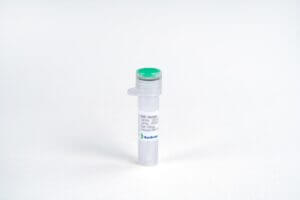
HGF, Human
$314.81 Add to cart View Product DetailsHepatocyte Growth Factor (HGF),also known as hepatopoietin-A and scatter factor, is a pleiotropic mitogen belonging to the peptidase S1 family (plasminogen subfamily). It is produced by mesenchymal cells and acts on epithelial cells, endothelial cells and haemopoietic progenitor cells. HGF binds to the proto-oncogenic c-Met receptor to activate a tyrosine kinase signaling cascade. It regulates cell growth, motility and morphogenesis, thus it plays a pivotal role in angiogenesis, tumorogenesis and tissue regeneration.
-

HMGB1, His, Human
$146.63 Add to cart View Product DetailsHuman High-mobility group box 1 protein (HMGB1), previously known as HMG-1 or amphoterin, is a member of the high mobility group box family of non-histone chromosomal proteins. Human HMGB1 is expressed as a 30 kDa, 215 amino acid (aa) single chain polypeptide containing three domains: two N-terminal globular, 70 aa positively charged DNA-binding domains (HMG boxes A and B), and a negatively charged 30 aa C-terminal region that contains only Asp and Glu.4, 5 Residues 27 – 43 and 178 – 184 contain a NLS. Posttranslational modifications of the molecule have been reported, with acetylation occurring on as many as 17 lysine residues. HMGB1 is expressed at high levels in almost all cells. It was originally discovered as a nuclear protein that could bend DNA. Such bending stabilizes nucleosome formation and regulates the expression of select genes upon recruitment by DNA binding proteins.
-

HRG1-β1, Human
$86.25 Add to cart View Product DetailsHeregulin1-Beta1(HRG1-Beta1) is one of the isoforms encoded by Neuregulin (NRG) genes. NRGs are synthesized as large transmembrane precursor proteins, and the NRG family has 4 members and 26 isoforms. These isoforms provide large diversities, including different tissue distribution, variable potencies, and different biological functions. HRG1-β1 belongs to Type I HRG1, and is expressed in neural tissue, respiratory epithelia, and heart. In vivo, HRG1 binds and activates both ErbB3 and ErbB4, the transmembrane receptor tyrosine kinase, and is involved in the proliferation, differentiation, and survival of cells. Aberrantly produced HRG1 could be used in the constitute activation of the ErbB receptors; therefore, the upregulation of HRG1 contributes to the development of tumors, including breast cancer.
-

HVEM-Fc, Human
$51.75 Add to cart View Product DetailsHerpes Virus Entry Mediator (HVEM) is a transmembrane protein that is the receptor for TNFSF14 (also known as LIGHT) and is therefore referred to asTNFRSF14. HVEM is expressed broadly on immune cells such as T cells, natural killer (NK) cells and monocytes. The interaction of 3 molecules of LIGHT with three molecules of HVEM forms a hexameric complex that leads to the recruitment and retention of effector cells and activates NK cells to produce large amounts of IFN-γ and GM-CSF. In addition to the canonical binding partner LIGHT, HVEM can also bind to the inhibitory signaling protein, B- and T- lymphocyte attenuator (BTLA), which suppresses immune responses. Therefore, the HVEM network plays an important role in regulating immunity and the behavior of lymphocytes.
-

Hydroxy Naphthol Blue
$405.81 Add to cart View Product DetailsHydroxy Naphthol Blue
-

Hydroxyurea, USP
$1,066.41 Add to cart View Product DetailsHydroxyurea, USP
-
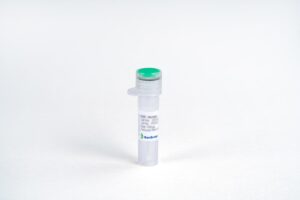
ICOS Fc Chimera, Human
$189.75 Add to cart View Product DetailsInducible T-cell costimulator is an immune checkpoint protein that in humans is encoded by the ICOS gene. CD278 or ICOS (Inducible T-cell COStimulator) is a CD28-superfamily costimulatory molecule that is expressed on activated T cells. It is thought to be important for Th2 cells in particular. The protein encoded by this gene belongs to the CD28 and CTLA-4 cell-surface receptor family. It forms homodimers and plays an important role in cell-cell signaling, immune responses and regulation of cell proliferation.
-

IFN-α 2a, Human
$68.14 Add to cart View Product DetailsInterferon-Alpha 2a (IFN-Alpha 2a), Human produced by leukocytes is a member of Interferon family. IFN-alpha is mainly involved in innate immune response against a broad range of viral infections. IFN-alpha 2 has three acid stable forms (a,b,c) signaling through IFNAR2. IFN-alpha 2a shares 99.4% , 98.8% aa sequence identity with IFN-alpha 2b and 2c respectively. IFN-alpha contains four highly conserved cysteine residues which form two disulfide bonds, one of which is necessary for biological activity.
-

IFN-α 2b, Human
$86.25 Add to cart View Product DetailsInterferon-Alpha 2b (IFN-Alpha 2b) produced by leukocytes is a member of Interferon family. IFN-alpha is mainly involved in innate immune response against a broad range of viral infections. IFN-alpha 2 has three acid stable forms (a,b,c) signaling through IFNAR2. IFN-alpha 2b shares 99.4% aa sequence identity with both IFN-alpha 2a and 2c. IFN-alpha contains four highly conserved cysteine residues which form two disulfide bonds, one of which is necessary for biological activity.
-

IFN-γ R II, Human
$133.69 Add to cart View Product DetailsIFN-gamma Receptor II, also known as IFNGR2 and IFNGT1, is a transmembrane protein belonging to the type II cytokine receptor family. IFNGR2 is a non-ligand-binding beta chain of the IFN-gamma receptor. It is an integral part of the IFN-gamma signaling transduction pathway and is likely to interact with GAF, JAK1 and JAK2. Defects in IFNGR2 are a cause of autosomal recessive Mendelian susceptibility to mycobacterial disease (MSMD), also known as familial disseminated atypical mycobacterial infection.
-

IFN-γ, Human
$72.45 Add to cart View Product DetailsHuman Interferon gamma (hIFN-γ) is amacrophage‐activating factor and the lone member of Interferon type II.The active form of IFN-γ is an antiparallel dimer that interacts with the receptor IFN-γR1 and sets off IFN-γ/JAK/STAT pathway. IFN-γ signaling does diverse biological functions primarily related to host defense and immune regulation, including antiviral and antibacterial defense, apoptosis, inflammation, and innate and acquired immunity. While IFN-γ–induced inflammatory cascade summons a variety of immune‐related cell types, such as macrophages, natural killer (NK) cells and cytotoxic T lymphocytes (CTLs), IFN-γ is also implicated in resistance to NK cell and CTL responses and in immune escape in a variety of cancers.
-

IFN-γ, Human(CHO-expressed)
$76.76 Add to cart View Product DetailsHuman Interferon gamma (hIFN-γ) is amacrophage-activating factor and the lone member of Interferon type II. The active form of IFN-γ is an antiparallel dimer that interacts with the receptor IFN-γR1 and sets off IFN-γ/JAK/STAT pathway. IFN-γ signaling does diverse biological functions primarily related to host defense and immune regulation, including antiviral and antibacterial defense, apoptosis, inflammation, and innate and acquired immunity. While IFN-γ–induced inflammatory cascade summons a variety of immune-related cell types, such as macrophages, natural killer (NK) cells and cytotoxic T lymphocytes (CTLs), IFN-γ is also implicated in resistance to NK cell and CTL responses and in immune escape in a variety of cancers.
-

IFN-γ, Rat (CHO-expressed)
$76.76 Add to cart View Product DetailsInterferon-γ (IFN-γ), also known as Type II interferon or immune interferon, is a cytokine produced primarily by T-lymphocytes and natural killer cells. The active form of IFN-γ is an antiparallel dimer that interacts with the receptor IFN-γR1 and sets off IFN-γ/JAK/STAT pathway. IFN-γ signaling does diverse biological functions primarily related to host defense and immune regulation, including antiviral and antibacterial defense, apoptosis, inflammation, and innate and acquired immunity. While IFN-γ–induced inflammatory cascade summons a variety of immune-related cell types, such as macrophages, natural killer (NK) cells and cytotoxic T lymphocytes (CTLs), IFN-γ is also implicated in resistance to NK cell and CTL responses and in immune escape in a variety of cancers.
-

IGF-BP-2, His, Human
$224.25 Add to cart View Product DetailsIGF-BP-2, also known as Insulin-like growth factor-binding protein 2, IBP-2 and BP-2, is a cysteine-rich secreted protein belonging to the IGF-binding protein superfamily. It is expressed by the central nervous system, bone cells and reproductive tissues. IGF-BP-2 binds to both IGF-I and IGF-II, with a much higher binding affinity to IGF-II than IGF-I. IGF-BP-2 has been shown to inhibitand stimulate the growth promoting effects of IGFs, thus serving as a regulator for IGF distribution, function and activity.
-

IGF-BP-4, His, Human
$224.25 Add to cart View Product DetailsInsulin-like growth factor-binding protein 4 (IGF-BP-4), also known as IBP-4, is a secreted glycoprotein belonging to the IGFBP family. IGF-BP-4 is produced by osteoblasts, epidermis, ovarian follicles and other tissues. It binds both insulin-like growth factor (IGF) I and II, and it circulates in the plasma in both glycosylated and non-glycosylated forms. IGF-BP-4 prolongs the half-life of the IGFs and has been shown to inhibit or stimulate the growth-promoting effects of the IGFs. Pregnancy Associated Plasma Protein A (PAPP-A) proteolytically cleaves IGF-BP-4 and reduces its affinity to bind IGFs, and thus serves as an important regulator of IGF-BP-4 function.
-

IGF-I, Bovine
$76.76 Add to cart View Product DetailsInsulin-like growth factor 1 (IGF-1), also called Somatomedin, is a hormone similar in molecular structure to insulin but has a much higher growth-promoting activity. IGF-1 consists of 70 amino acids in a single chain with three intramolecular disulfide bridges. IGF-1 may be a physiological regulator of [1-14C]-2-deoxy-D-glucose (2DG) transport and glycogen synthesis in osteoblasts. It is able to stimulate glucose transport in bone-derived osteoblastic (PyMS) cells and is effective at much lower concentrations than insulin, not only regarding glycogen and DNA synthesis but also with regard to enhancing glucose uptake. It may also play a role in synapse maturation.
-
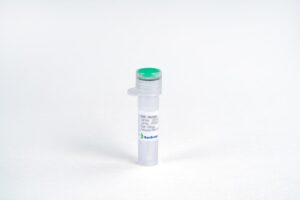
IGF-I, Human
$76.76 Add to cart View Product DetailsInsulin-like growth factor I (IGF-I) also known as Somatamedin C is a hormone similar in molecular structure to insulin. Human IGF-I has two isoforms (IGF-IA and IGF-IB) which are differentially expressed by various tissues. Mature human IGF-I shares 94% and 96% aa sequence identity with mouse and rat IGF-I, respectively. Both IGF-I and IGF-II (another ligand of IGF) can signal through the IGF-I receptor (IGFIR), but only IGF-II can bind the IGF-II receptor (IGFIIR/ Mannose-6-phosphate receptor). IGF-I plays an important role in childhood growth and continues to have anabolic effects in adults.
-

IGF-I, Mouse
$86.25 Add to cart View Product DetailsInsulin-like Growth Factor I (IGF-I) is a single chain 7 kDa growth-promoting polypeptide originally identified as somatomedin-c. It belongs to the IGF family of peptides, which also includes IGF-II and insulin. The gene expression of IGF-I is mainly regulated by Growth Hormone, and IGF-I executes its functions via signaling through transmembrane tyrosine receptors (IGF Receptors). Most circulating IFG-I is associated with the IGF Binding Protein 3 (IGFBP-3), and the IGFBPs may inhibit the actions of IGFs by competing against the IGF Receptors. IGF-I is active in post-natal and adult animals, and is crucial for somatic growth, as IGF-I null mice show marked retardation in utero. IGF-I is involved in carcinogenesis, and related to prostate cancer as well.
-

IGF-I, Rat
$76.76 Add to cart View Product DetailsInsulin-like Growth Factor I (IGF-I) is a single chain 7 kDa growth-promoting polypeptide originally identified as somatomedin-c. It belongs to the IGF family of peptides, which also includes IGF-II and insulin. The gene expression of IGF-I is mainly regulated by Growth Hormone, and IGF-I executes its functions via signaling through transmembrane tyrosine receptors (IGF Receptors). Most circulating IFG-I is associated with the IGF Binding Protein 3 (IGFBP-3), and the IGFBPs may inhibit the actions of IGFs by competing against the IGF Receptors. IGF-I is active in post-natal and adult animals, and is crucial for somatic growth, as IGF-I null mice show marked retardation in utero. IGF-I is involved in the carcinogenesis, and related to the prostate cancer as well.
-

IGF-II, Human
$86.25 Add to cart View Product DetailsInsulin-like Growth Factor II (IGF-II) is a single chain 7 kDa polypeptide, and shares a high degree of homology with insulin. During circulation in vivo, IGF-II is complexed to high affinity binding proteins, IGF Binding Proteins (IGFBP), which act as circulating reservoirs, transport IGF-II, and prolong the half life of IGF-II. The receptors of IGF-II (IGFRs) are transmembrane tyrosine receptors, and are heterotetrameric consisting of two α-subunits and two β-subunits. IGFRs execute their role via intracellullar signaling molecules, such as IRS, shc, and PI3K. The functions of IGF-II include promoting cell survival, growth, proliferation, differentiation and motility. In particular, IGF-II promotes proliferation, inhibits death, and stimulates transformation in breast cancer cells.
-
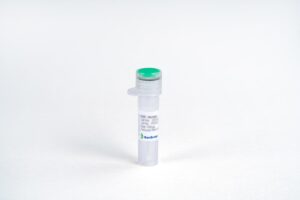
IHH, Human
$155.25 Add to cart View Product DetailsThe Indian Hedgehog protein (IHH) is one of three proteins in the mammalian hedgehog family, the others being desert hedgehog (DHH) and Sonic hedgehog (SHH). Hedgehog proteins are important signaling molecules during embryonic development and are highly conserved across species. Mouse and human IHH share 100% amino acid identity in the signaling domain, while mouse IHH and SHH share 90% amino acid identity in the N-terminal signaling domain. IHH mRNA expression is detected in fetal lung, gut, stomach, liver, kidney, pancreas and strongly in cartilage in growth regions of the developing bone. IHH has a specific role in bone growth and differentiation. In addition, IHH is involved in yolk sac vasculogenesis, having a central role in differentiation of epiblast cells into endothelial and red blood cells. IHH gene mutations cause the brachydactyly type A1 which is characterized by shortening or malformation of the phalanges and also the acrocapitofemoral dysplasia.
-

IL-1 RA, Human(HEK 293-expressed)
$76.76 Add to cart View Product DetailsIL-1 Receptor Antagonist, also known as IL-1RA, ICIL-1RA, IRAP and IL-1RN, is a member of the interleukin 1 cytokine family. It is expressed by monocytes, neutrophils, macrophages, epithelial cells and fibroblasts. IL-1RA inhibits the activity of both IL-1alpha and IL-1beta, and modulates a variety of IL-1 related immune and inflammatory responses. It inhibits the activity of IL-1 by binding to the receptor IL-1R1 and preventing its association with the coreceptor IL-1RAP for signaling. Clinical studies are being conducted to investigate the use of IL-1RA in the treatment of sepsis, rheumatoid arthritis and chronic myelogenous leukemia.
-

IL-10, Human(CHO-expressed)
$271.69 Add to cart View Product DetailsInterleukin-10 (IL-10), initially known as Cytokine Synthesis Inhibitory Factor (CSIF), belongs to the IL-10 family and shares more than 80% sequence homology with Epstein-Barr Virus protein BCRFI. It is produced by many immune cells, such as T-cells, macrophages, mast cells, and dendritic cells. It is usually secreted as a homodimer and, upon binding to its receptor, inhibits the synthesis of a number of cytokines, including IFN-gamma, IL-2, IL-3, TNF and GM-CSF produced by activated macrophages and Th2 cells. It also displays ability to suppress Antigen-Presenting Cell (APC) function. The net effect of Interleukin-10 appears to be inhibitory; however, stimulatory effects, such as stimulation of B cell maturation and antibody production, are also reported.
-

IL-10, Mouse(CHO-expressed)
$271.69 Add to cart View Product DetailsInterleukin-10 (IL-10), initially known as Cytokine Synthesis Inhibitory Factor (CSIF), belongs to the IL-10 family and shares more than 80% sequence homology with the Epstein-Barr Virus protein BCRFI. It is produced by many immune cells, such as T-cells, macrophages, mast cells and dendritic cells. It is usually secreted as a homodimer and, upon binding to its receptor, inhibits the synthesis of a number of cytokines, including IFN-gamma, IL-2, IL-3, TNF and GM-CSF, by activated macrophages and Th2 cells. It also displays the ability to suppress Antigen-Presenting Cell (APC) function. The net effect of Interleukin-10 appears to be inhibitory; however, stimulatory effects, such as stimulation of B cell maturation and antibody production, are also reported.
-

IL-10, Rat (CHO-expressed)
$271.69 Add to cart View Product DetailsInterleukin-10 (IL-10), initially known as Cytokine Synthesis Inhibitory Factor (CSIF), belongs to the IL-10 family and shares more than 80% sequence homology with the Epstein-Barr Virus protein BCRFI. It is produced by many immune cells, such as T-cells, macrophages, mast cells and dendritic cells. It is usually secreted as a homodimer and, upon binding to its receptor, inhibits the synthesis of a number of cytokines, including IFN-gamma, IL-2, IL-3, TNF and GM-CSF produced by activated macrophages and Th2 cells. It also displays the ability to suppress Antigen-Presenting Cell (APC) function. The net effect of Interleukin-10 appears to be inhibitory; however, stimulatory effects, such as stimulation of B cell maturation and antibody production, are also reported.
-

IL-11 Fc Chimera, Human
$319.13 Add to cart View Product DetailsInterleukin-11 is a pleiotropic cytokine that was originally detected in the conditioned medium ofan IL-1α-stimulated primate bone marrow stromal cell line (PU-34) as a mitogen for the IL-6-responsive mouse plasmacytoma cell line T11. IL-11 has multiple effects on both hematopoietic and non-hematopoietic cells. Many of the biological effects described for IL-11 overlap with those for IL-6. In vitro, IL-11 can synergize with IL-3, IL-4 and SCF to shorten the G0 period of early hematopoietic progenitors. IL-11 alsoenhances the IL-3-dependent megakaryocyte colony formation. IL-11 has been found to stimulate the T cell-dependent development of specific immunoglobulin-secreting B cells.
-

IL-11, Mouse(HEK 293-expressed)
$271.69 Add to cart View Product DetailsInterleukin-11 (IL-11) is a pleiotropic cytokine that was originally detected in the conditioned medium of an IL-1α-stimulated primate bone marrow stromal cell line (PU-34) as a mitogen for the IL-6-responsive mouse plasmacytoma cell line T11. IL-11 contains no cysteine residues or potential glycosylation sites. IL-11 has multiple effects on both hematopoietic and nonhematopoietic cells. Many of the biological effects described for IL-11 overlap those for IL-6. In vitro, IL-11 can synergize with IL-3, IL-4 and SCF to shorten the G0 period of early hematopoietic progenitors. IL-11 also enhances the IL-3-dependent megakaryocyte colony formation. IL-11 has been found to stimulate the T cell dependent development of specific immunoglobulin-secreting B cell.
-

IL-12, His, Rat
$306.19 Add to cart View Product DetailsInterleukin-12 (IL-12), also known as NKSF, TCMF, CLMF and TSF, is a heterodimeric cytokine composed of p35 and p40 subunits. It is produced by monocytes, macrophages, B cells and dendritic cells in response to bacterial lipopolysaccharides and intracellular pathogens. IL-12 signals through the IL-12 receptor complex, which is comprised of IL-12 Rβ1 and IL-12 Rβ2. IL-12 induces the proliferation and activation of hematopoietic stem cells, natural killer cells and T- cells. It is indispensible during the development of Th1 cells, leading to the production of IFN-gamma and IL-2.
-

IL-12, Mouse
$439.88 Add to cart View Product DetailsInterleukin-12 (IL-12), also known as NKSF, TCMF, CLMF and TSF, is a heterodimeric cytokine composed of p35 and p40 subunits. It is produced by monocytes, macrophages, B cells and dendritic cells in response to bacterial lipopolysaccharides and intracellular pathogens. IL-12 signals throughtheIL-12 receptor complex, which is comprised of IL-12 Rβ1 and IL-12 Rβ2. IL-12 induces the proliferation and activation of hematopoietic stem cells, natural killer cells and T- cells. It is indispensible during the development of Th1 cells, leading to the production of IFN-gamma and IL-2.
-

IL-13, His, Mouse(CHO-expressed)
$271.69 Add to cart View Product DetailsInterleukin-13 (IL-13), also known as T-cell activation protein P600, is an immunoregulatory cytokine belonging to the IL-4/IL-13 family. It is produced by activated Th2 cells, mast cells and NK cells. IL-13 signals through a receptor complex composed of IL-4Rα and IL13Rα1 (or IL13Rα2). IL-13 inhibits the expression of inflammatory cytokines such as IL-1β, TNF-α and IL-6 by monocytes and macrophages. It also induces B cell activation and IgE secretion.
-

IL-13, Human(CHO-expressed)
$271.69 Add to cart View Product DetailsInterleukin 13 (IL-13) is an immunoregulatory cytokine produced primarily by activated Th2 cells, and also by mast cells and NK cells. Targeted deletion of IL-13 in mice resulted in impaired Th2 cell development and indicated an important role for IL-13 in the expulsion of gastrointestinal parasites. IL-13 exerts anti-inflammatory effects on monocytes and macrophages and it inhibits the expression of inflammatory cytokines such as IL-1beta, TNF-alpha, IL-6 and IL-8. IL-13 has also been shown to enhance B cell proliferation and to induce isotype switching resulting in increased production of IgE. Blocking of IL-13 activity inhibits the pathophysiology of asthma. Human and mouse IL-13 is cross-species reactive.






